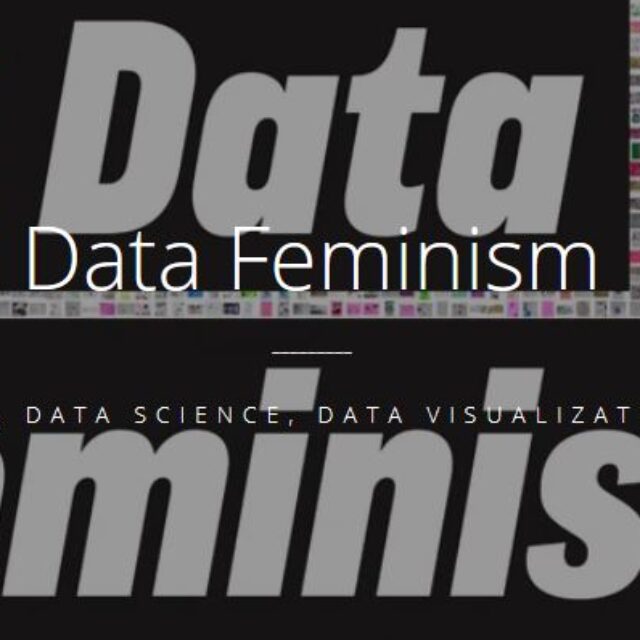Catherine D’Ignazio presented on Data Feminism, the new book she co-authored with Lauren Klein, on Wednesday, March 11th in Snell Library. D’Ignazio’s talk was also livestreamed by the NULab on Twitter and the archive can be found here. Klein and D’Ignazio’s book illustrates “a new way of thinking about data science and data ethics that is informed by the ideas of intersectional feminism.” In her talk, D’Ignazio discussed several examples where ideas of intersectionality are applied to data science and how power structures can be challenged and changed. Using intersectional feminist ideas theorized by Kimberlé Crenshaw, Klein and D’Ignazio discussed seven principles of data feminism: examine power, challenge power, rethink binaries and hierarchies, elevate emotion and embodiment, embrace pluralism, consider context, and make labor visible. While the talk focused on a small set of examples, the book is full of examples of the relationships between data and power, showing why data science should be feminist and how feminist principles can be applied to data science.
As an example of the “examine power” principle, D’Ignazio highlighted Patricia Hill Collins’ “matrix of domination” theory of structural oppression and discussed The Library of Missing Datasets (2016), an art installation by Mimi Onuoha. The core questions posed by Onuoha installation are: who is collecting data, why are they collecting the data, and most important, what data is being left out? This project helps show how data reflects existing power structures. For example, datasets (e.g., census data, social media data, or advertising profiles) are often collected by those in power for the purposes of maintaining power or making money. As a result of the priorities of those in power, some datasets get left out or go missing. Some missing datasets cataloged by this installation include: people excluded from public housing because of criminal records, Muslim mosques/communities surveilled by the FBI/CIA, and measurements for global web users that take into account shared devices and VPNs (see more here).
Knowing what datasets are out there (i.e., examining power) informs action and so civil society groups are stepping in to collect and find missing datasets (i.e. challenging power). This leads to the question, when exactly do you make data science feminist? Klein and D’Ignazio’s answer is simple: all the time and everywhere. It matters who the personnel are that are filling positions all along the research process, including who is leading research, making decisions, and providing funding. Furthermore, the seven principles apply during the entire data science pipeline from funding to data collection to data analysis and visualization.
Data visualization is one area where data feminism is particularly important because it is often how people outside of the research process (including policymakers) interact with the research, draw conclusions, and make decisions. In her talk, D’Ignazio discussed the “rethink binaries and hierarchies” and “elevate emotion and embodiment” principles in relation to data visualization. Often visualizations rely on a false binary between reason and emotion, but we can have visualizations that include both. Many data visualization “best practices” typically include clean designs and aesthetics, and a “just the facts” approach to transmitting data. However, these best practices result in decontextualized visualizations like bar graphs where the visualization can be applied to any dataset, divorcing it from any emotional or affective stakes. By contrast, this visualization shows gun deaths in the United States not just as raw numbers, but in connection with the years of human life lost. When aggregated, the half a million years of human life cut short by gun violence in 2013 alone is truly horrifying and not something that could be captured in a bar chart. That is not to say that bar graphs are always inappropriate, but by applying data feminist principles to all aspects of the research process, we can create more informative and impactful research. Klein and D’Ignazio discuss more examples of data feminist applications in their book Data Feminism, available now. For further information, also see the Data + Feminism Lab and the Digital Humanities Lab.



